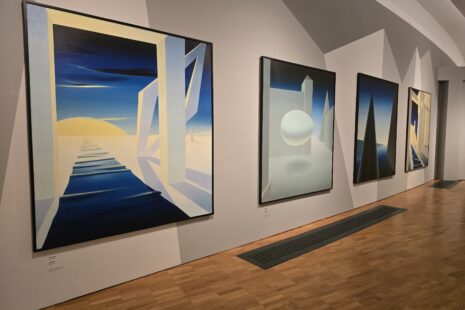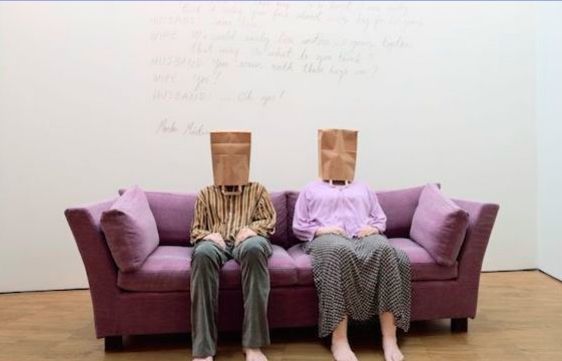
Marko Mäetamm. Marriage, 2015. Photo: Stanislav Stepashko
According to the curator Alistair Hicks, the exhibition shows a divided world in a divided medium. Pettibon, like Marko Mäetamm who shows in the next-door rooms, uses drawing and text. The show starts with typical images of the American dream, surfers out on the West Coast, trains that took the pioneers west and baseball players, but there is angst behind that, too. ‘Vavoom’ has a scream as loud as Munch’s. The show is punctuated with versions of this. Pettibon has made over a dozen works especially for his second visit to Estonia. They show the tensions in a world that still does not know how to live in a de-polarised world. The exhibition leads up to serried ranks of Stalin’s images that one cannot help but feel are in tribute to his uncle’s time in prison.
Arterritory.com wanted to intrigue those interested in this exhibition by asking some questions on the visual aspects of the exhibition. The following answers are given by Alistair Hicks, the curator of Home and Away in Kumu.
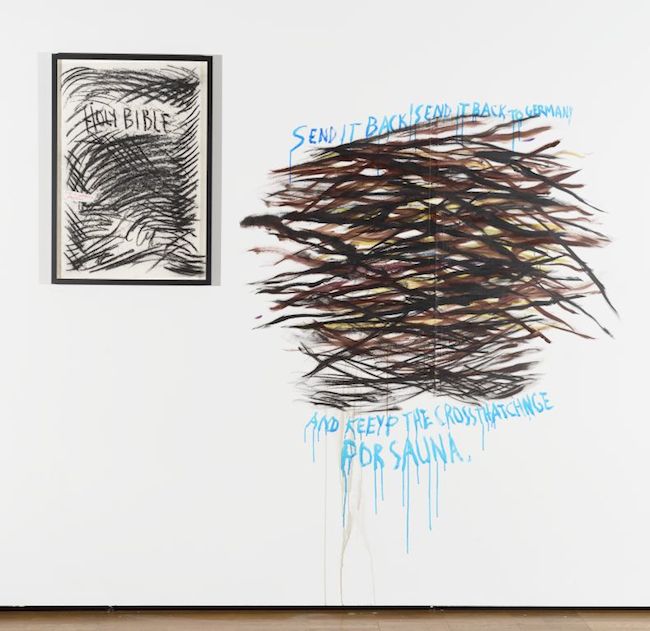 Raymond Pettibon. No Title (The illustrated version), 2012
Raymond Pettibon. No Title (The illustrated version), 2012
Could you describe the visual and conceptual dialogue that has emerged between the two artists in this show?
Visually there is a very straightforward link. Pettibon and Mäetamm are both artists that combine drawing and text. Although their routes and motivation may be quite different, the binding of text and image is at the core of their work – an essential way of communication with a contemporary audience used to receiving text and image together. Both artists harness their innate ability to encapsulate the moment in postures of outrage, feeling, indignation, sadness, while linking them together like a bumpy animated film, which of course is one of Mäetamm’s important media.
Could you describe the exhibitions’ visual layout?
The radically different layouts to Mäetamm’s and Pettibon’s exhibitions arise from the essential premise of the show Home and Away. Marko’s home is in Estonia, while Raymond’s mother made her family home in America.
Marko has built a home with many rooms – a hall, a kitchen, a dining room, a trophy room – but the sum of the rooms purposefully does not make a cosy home, as he has unleashed the emotions of domestic life. They are the main players in this saga. Marko was involved in every smallest decision in making this world.
Pettibon asked me to lay out his exhibition, so it begins with a very spare room with single small work for each wall, to show the four main concurrent themes of Pettibon’s life’s work: Surfers, Baseball, Trains that all show different sides of the American dream, and the Vavoom, the scream of anguish behind the endless pursuit of this dream. The visitor then enters a room filled floor to ceiling with his drawings. On the long curved wall a series of predominantly text pieces underscore the fact that this is an exhibition about balancing text and image. There is a quiet room at the end with seats for people to sit down in, but the works are not that quiet when you study them. Finally one exits through the Stalin room, where 18 drawings of Stalin are lined up, a homage to Raymond’s uncle, Otto Peters, who spent 11 years in Stalin’s Gulag for the audacity for fighting the Russians in the war.
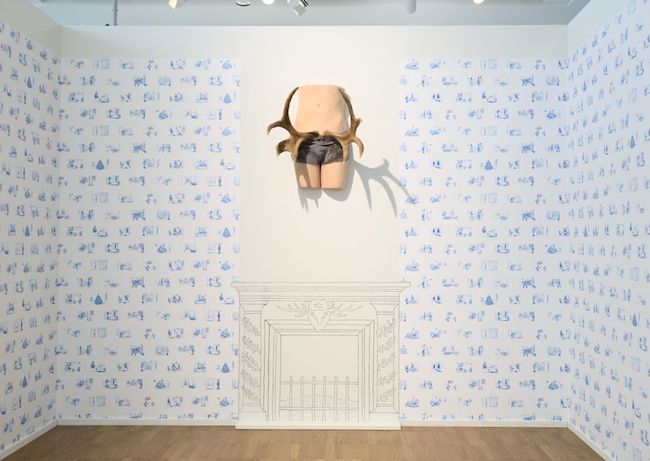 Marko Mäetamm. Fireplace, 2012
Marko Mäetamm. Fireplace, 2012
How would you characterize the overall feeling/atmosphere of the show?
Home and Away! Both exhibitions are journeys. One takes you across the world and back again. The other is an equally perilous trip through the maze of our family life.
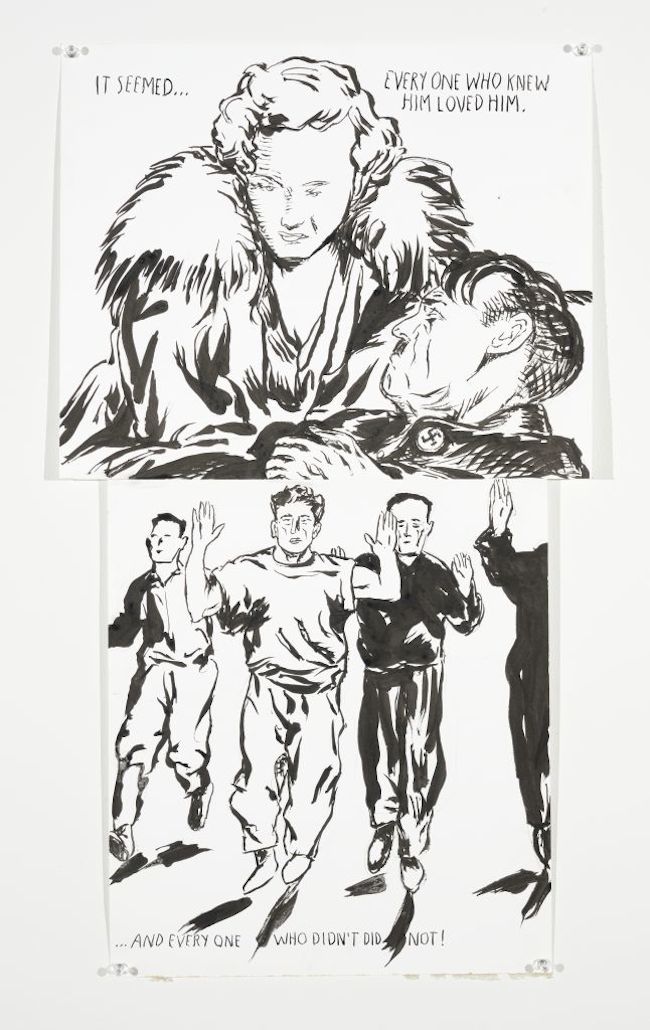
Raymond Pettibon. No Title (It seemed … everyone …), 2015
Home and Away
Raymond Pettibon: Living the American Dream
Marko Mäetamm: Feel at Home
Contemporary Art Gallery at the Kumu Art Museum, Tallinn
Through September 13, 2015
Source: Arterritory.com





